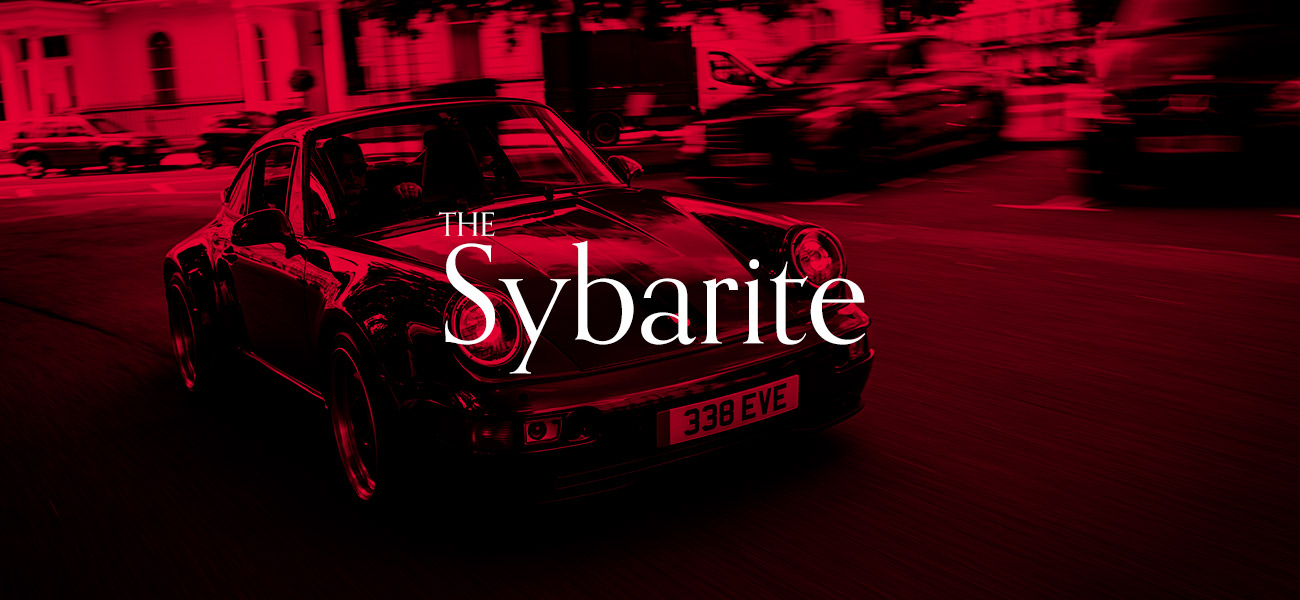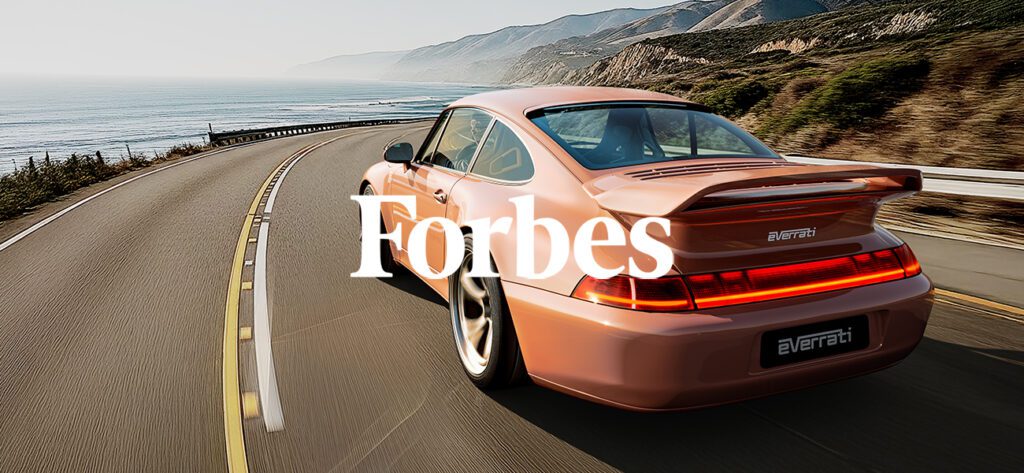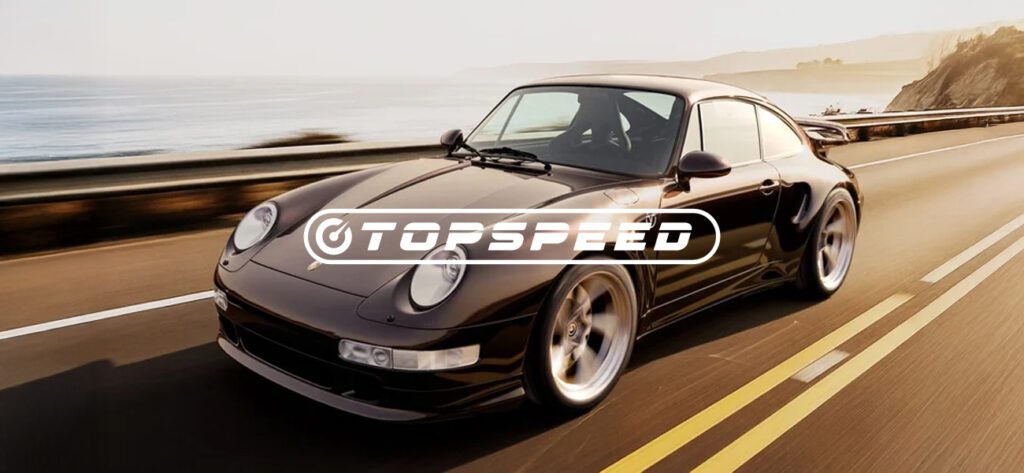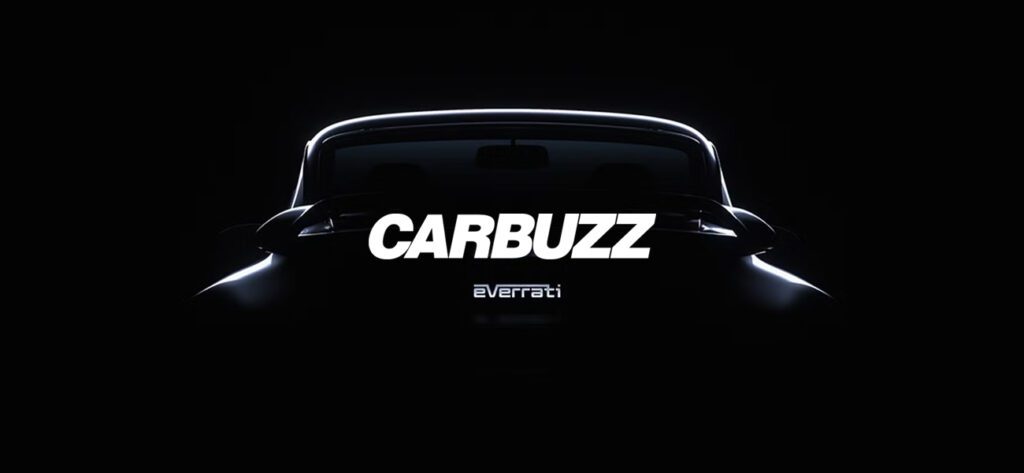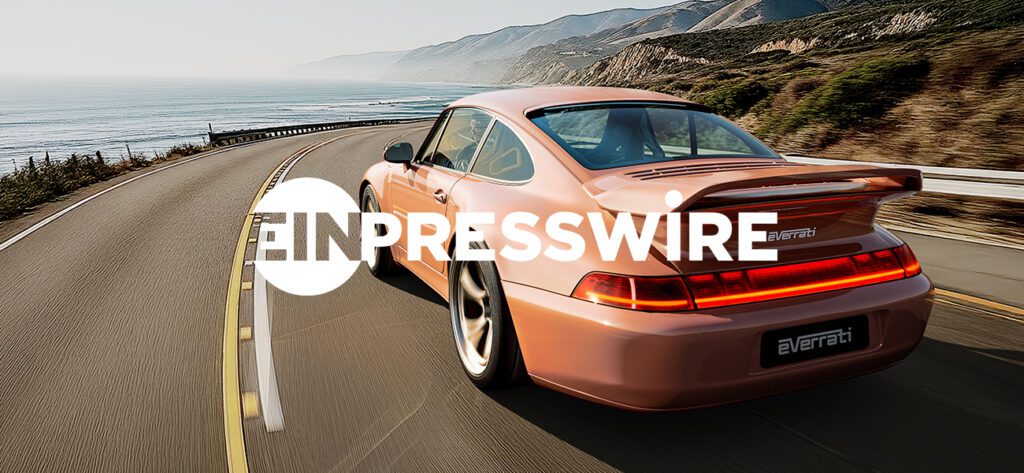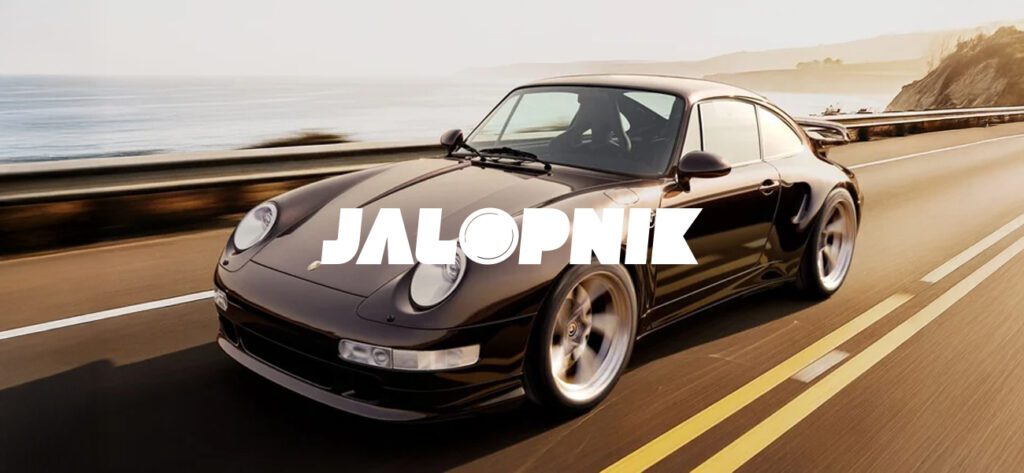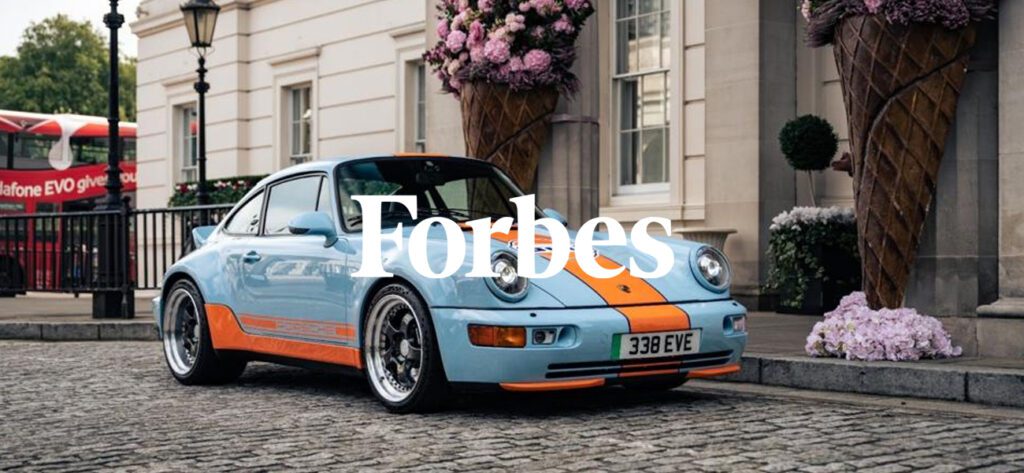I love vinyl records. I love listening to them, I love the ceremony, and I love the artistry and purpose. Owning vinyl too, choosing the album to buy carefully, and handling it with care. The soft hiss of anticipation before the first track starts… But sometimes, sometimes you want to listen to that half-remembered song that you used to love and being able to stream it digitally in crystal-clear high-fidelity, well that immediacy is special too. The great privilege of our age is having access to both.
We were lucky enough to sit down with Justin Lunny, founder and CEO of Everrati, who are bringing the best of both worlds, the analogue artistry and the digital performance, to the world of motoring. Everrati are both literally and metaphorically, electrifying classic cars. They lovingly restore classics, and offer a very special upgrade; they can strip out the engine, gearbox and any smoky, noisy bits, and replace them with an electric powertrain. Thereby they bring decades of performance increase, and ease of use (to say nothing of green credentials and everyday usability) to some of the most beautiful pieces of automotive engineering ever to be set on 4 wheels. Here’s what Justin had to say:
Can you tell us a little of your history before starting Everrati?
My background is in technology. I started my career at Hewlett Packard, and I’ve done a variety of tech businesses until about 2007, when my business partner and I set up a pay /tech business. We sold that in 2016, and on the way, had various different businesses as well. There has always been a big focus on quality, you can’t get payments wrong: If you get payments wrong, then things can go the wrong way quite quickly. But my passion is cars – from a very early age, probably four or five, I could name every oncoming car just by their headlights. So in 2018, I started looking for something else to do really, and then a couple of things happened. Firstly, my daughter, who is now 11, genuinely started worrying about climate change and she was having nightmares about the world flooding, bless her. Secondly, we used to live right in the centre of Windsor, opposite the castle, and from my daughter’s bedroom window you could see where the horses exercised behind the wall. And of course we saw Harry and Meghan drive away from Windsor Castle in the electric E-type. Well, that was a bit of a moment for me, and I knew what I wanted to do next.
Can you talk us through the electrification process – how long does it take, and what’s the price of entry?
You quite rightly call it the electrification process because we don’t call it a conversion, even though we are in a market where there are lots of converters, but we tend to look at it as a manufacturer would look at a car. So if you take the Porsche 964 [manufactured and sold between 1989 and 1994], or the old Land Rover, or the GT40, we kind of strip them all the way back to the chassis, and we look at them as if we were redesigning the power train in today’s world. So in other words, if in 1966, Ford had the technology that we have today, we like to think that they would put that into that chassis and into that environment. Firstly, we take the original vehicle, and we weigh it. We take out the oily bits, and 3D scan the space, and we weigh it again. Then we CAD design a brand-new power train for that car. To give you some examples, the GT40 has already had five or six thousand hours of development time. And that’s not going to be rolling out until probably February next year. So it gives you some kind of feel for the work that goes in, and therefore the quality and the standards. So I think that’s how we like to describe the difference between us and others, because there are people out there that will sell you a car that is made up of just bits of old Nissan leaf. So that’s where the process starts. Prices start at about 150 K plus VAT. So 180 K really for our Land Rover product, which is beautifully restored, a nut and bolt restoration, beautiful finish, uber cool Land Rover, but with a brand new electric powertrain.
I saw it, it looks stunning. What kind of cars can be electrified?
We spent an awful lot of time engineering each of the models that we did and then those models became available to order. So for example, the Porsche 964, that’s now been in testing for over a year, and the first customer orders will probably go out at the end of Q1 next year, has quite a long lead in time, but each one is built to order, so custom paint, specifications, and leather. The Land Rovers are really cool, the GT40, I think we’ve done more than anything, especially in the US. The Mercedes-Benz Pagoda is not about out and out power, it’s about just cruising and looking cool. And then we have a few others that are in the pipeline. We test them, we test them and we test them. And then they become production ready, and we make those cars to order.
I think I’ve seen you’ve used, up to 800 horsepower. How does that go into something that was designed to handle about 300 horsepower?
If you think about the GT40, it was a race car that sometimes was used on the road, it’s a Le Mans winning car that was doing 220 miles an hour back in the sixties. So, you know this is a pretty impressive machine. If you take our Porsches, we’ve topped out at about 500 horsepower, which sounds a lot, and it is a lot, but actually if you look at GT2s, the chassis can take the power and we know the brakes and the suspension can take the power because it’s a market that is known for upgrading. Whereas our Land Rover is fairly pedestrian, I think probably 12 and a half seconds to 60, because it’s not about performance; it’s about cool. In fact, more than anything, it’s about going slow and looking cool.
So, in a Petrol-powered vehicle, the engine is really the heart and soul of the machine. It strikes me that in electric cars, the methodology is very different. The motors themselves, though technically advanced, aren’t the representation of the cutting edge of the tech, it’s actually the batteries, which is sort of analogous to the petrol tank being the rate-limiting-step on a Ferrari. Is that right?
Really good point. It’s the sum of the parts, it’s horses for courses. So for example, in our Land Rover, even though it’s a brand new, really high performance in terms of what it needs to do most, it’s not going to set the world alight in terms of anything else. It’s designed to do what it does. In fact on that, we’ve even kept the original transfer box, so it can go either two or four wheel drive and actually have some engagement with it. Whereas, if you look at our GT40, they’re genuinely some of the best electric motors you can get in any car. The Nio EP9, I think it might still be the fastest electric car around the Nürburgring, those same motors are used in our GT40. And in fact, the same motors were used in the Volkswagen I.D. R. which is the fastest car up Pike’s Peak. Those motors are probably the best motors you can buy in terms of performance and output. So what I would say is that there’s almost as much movement in our electric motors in terms of where they were a few years ago, as there is now in the battery world. You just don’t hear much about it. We’re using some of the most high-performance motors in our GT40 that you can buy and they come at a huge cost, as you can imagine. But we’re prepared to spend that money. And our cars are not by definition going to be for everybody, but they’re getting the very best in terms of engineering and power and everything else that goes with it. But you’re absolutely right, if you look at all the noise in the market, it’s about batteries right now.
Sound effects and tactile feedback that replicates petrol engines. I know you guys do this. So I ask this with lots and lots of respect. Is that something wonderful or missing the point of an EV?
That’s a great question. First of all, I think the sound is so emotive and for us, most of what we’re doing is about building passionate EVs, where these cars have as much soul as they would have had as a combustion engine. People love to hear something visceral, and actually, something secondary is safety. The law is that every new EV has to make a sound, at a certain speed for pedestrian safety. Let’s say you take the GT40, it’s such a beast to drive as a petrol engine, it’s just horrible in many ways; it’s loud, it’s hard work. In fact, you can’t buy one of those (petrol versions) in Switzerland right now just because of the noise and the emissions. So, we’re just developing a load of different driver engagement stuff. So things like mapping an EV torque curve to be the same as the V8 version, so you can actually feel it changing gear.
Sorry, let me clarify that, it doesn’t change gear, but it feels like it’s changed?
It’s a virtual gear-change technology. So, against a certain power input, and speed we can map a torque curve that looks very similar, as close as you’d like frankly, to a petrol car. We literally get to a point, and then you have to do something. So you will effectively have the ability to select the next gear, even though you’re not physically doing so. And it pulls that driver engagement back into owning an EV GT40. We will top out at 60 miles an hour until you shift up again. So it’s kind of unusual, but we think that people coming out of a petrol car want some engagement, they want that kind of analog nature, even though some of it’s plumbed back in. And of course, if you don’t want it, you can switch it off and drive it silently. The kind of customers we are selling cars to already have 2, 3, 10, 20 cars, they’re not people that have just got one vehicle, and therefore they buy things on emotion. They buy things based on passion, they’re just enjoyable and they’re fun. And this is kind of what we’re building back into electric cars.
That sounds deeply impressive, like you’re bringing the best of digital to the analogue?
Completely right. There’s nothing like getting into something you just get hold of, our Porsche 911, the 964 is lighter than the original, and almost twice the power, but it still feels engaging. You turn the wheel and it turns immediately, it still bobs like a 911 front to back. And in fact, we’ve got a few female customers, who are looking at our 911, our Targa, but they would never buy them as a petrol engine. Because they’re worried about them letting them down, frankly, they’re worried about oil on the floor, they’re worried about all the things that unfortunately can still come with a classic car. They just love the look of them because they are automotive art in the main. And unfortunately if we don’t succeed, cars like that will just go away because you won’t get to use them anymore.
That’s a very interesting point. I wonder how many moving parts there are in a 1991 Porsche versus yours?
It will be, you can certainly count them on less than two hands as opposed to thousands of parts.
I can see that’s really a huge barrier to entry of the petrol version, its complexity.
And then you look at the stats, I think it’s 91% of all EV drivers would never go back to a combustion engine.
Where do you guys source all your batteries, motors and other components from?
There’s one component in the Porsche that we don’t do OEM, but everything else is generally speaking from UK suppliers. So for example, our motors on the GT40 come from a company called Integral Powertrain. Our batteries come from Envision who are part of the Nissan group essentially. We use an entirely remapped Tesla drive unit in the back of our Porsche, and the reason is because from a power to weight ratio and size, it fits really really well. The battery cells are still made in the far east at the moment but, we are talking to British companies who are starting to look at battery development in the UK.
What’s in your pipeline?
I guess the key thing for us next is our growth into the US. We started marketing our cars at the end of May this year, and already 50% of our sales are pretty much in the US – that’s people who have never met us, never driven the car, never seen the car. It’s all been around the PR, the videos, and the reviews. I’m in the US next week talking to a number of partners in LA and around the bay area. You can imagine California, in terms of clean air and the amount of friendly car lovers who love the sorts of things we’re doing is a big opportunity for us.
What do you think is the future for the EV world, and for Everrati?
I think they’re here to stay. There are a lot of people talking about hydrogen, and I think hydrogen is relevant for commercial vehicles, but it really depends on how that hydrogen is produced. At the moment, most hydrogen isn’t green in any way, shape or form. EVs are here to stay, and what will happen is the things we already talked about, batteries, will get better, they’ll be lighter. There are companies out there now talking about batteries that can charge within five minutes. That whole ease of use will absolutely happen. For us, I think that everybody’s got a unique personality; they want people to know who they are. And I think being able to jump in a car that you’ve always loved, maybe your poster car, being able to still love and enjoy those cars really is what we’re all about. It’s not for everybody because not everybody can afford it, but I think it’s a really interesting space. We’re focused on what we call iconic cars, and as batteries get cheaper, of course, we can start to get cheaper ourselves. So, you know, is it a Golf GTI? Is a Renault 5 GT Turbo next? I don’t know, but I’d love it.
Source: The Sybarite
